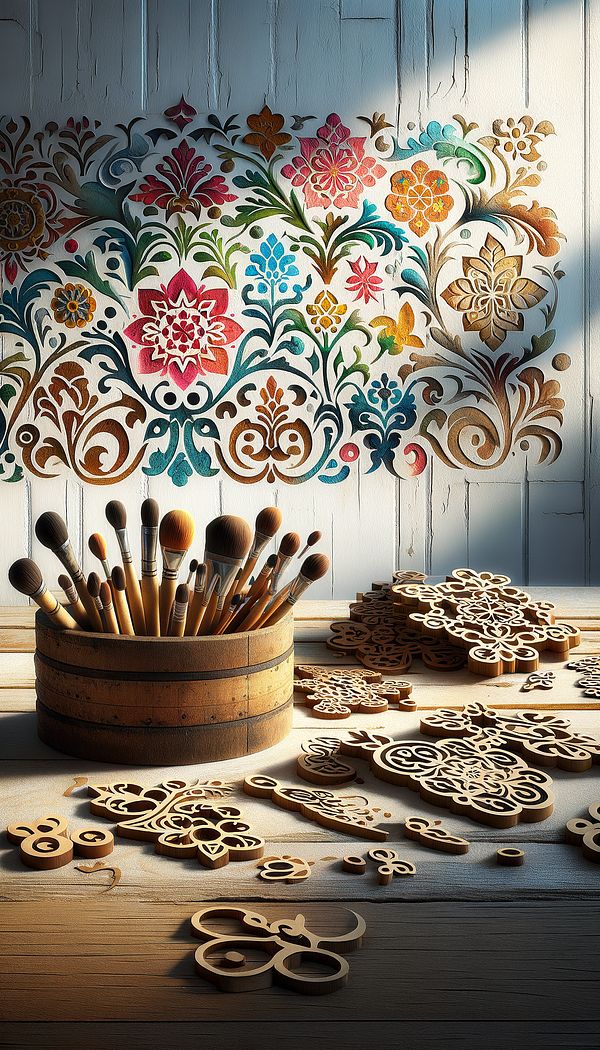What is a Stencil?
A template used to draw or paint identical letters, symbols, shapes, or patterns every time it is used.
Description
In the realm of interior design, a stencil is more than just a tool; it's a gateway to creativity and personal expression. This flat template, crafted from paper, metal, or plastic, comes adorned with cut-out letters, symbols, shapes, or patterns. By applying paint, ink, or another medium through the cut-out areas, designers and hobbyists alike can imprint the stencil’s design onto various surfaces, including walls, furniture, fabrics, and floors.
Stencils offer an accessible way to achieve consistent, professional-looking designs without the need for freehand drawing skills. They empower users to create intricate patterns or bold graphics with precision and uniformity. From intricate floral patterns to geometric designs, stencils cater to a wide array of artistic expressions.
Usage
Stencil art can be found in many interior design contexts, from stenciled wall patterns in a bedroom to enhance its aesthetic, to stenciled motifs on furniture, giving them a unique, personalized touch. In commercial spaces, stencils are often used for branding purposes, such as adding logos to walls or floors.
FAQs
-
Can stencils be reused?
Yes, most stencils are designed for multiple uses. However, the durability depends on the material of the stencil and how well it is cleaned and maintained.
-
Are there specific paints recommended for stencil art?
While you can use various types of paint for stencil art, acrylic and spray paints are commonly recommended for their quick-drying properties and ease of use.
-
Can I create my own stencils?
Absolutely! Custom stencils can be made by cutting your desired design out of a sturdy, yet flexible material like plastic sheets, cardboard, or thick paper.
Practical Application
To achieve the best results with stencils, ensure the surface you're working on is clean and smooth. Apply the paint or medium with a dabbing motion rather than stroking to prevent it from seeping under the stencil. For intricate designs, consider using a smaller brush or sponge for greater control. Remember to clean your stencil after each use to maintain its precision.
-
Decorative Techniques322 articles
-
Color & Patterns154 articles
-
Wall Treatments & Finishes157 articles
-
CubismCubism is an art movement known for its use of geometric shapes and abstracted forms.
-
French Country StyleFrench Country Style is an elegant and rustic design approach, inspired by the homes in the French countryside.
-
Flock WallpaperFlock wallpaper is textured wallpaper known for its velvet-like, soft surface.
-
Pattern RepeatPattern repeat is the distance between one point in a design to the exact point where it starts again.
-
RomanesqueRomanesque is a style of architecture and design characterized by semi-circular arches, thick walls, and sturdy pillars.
